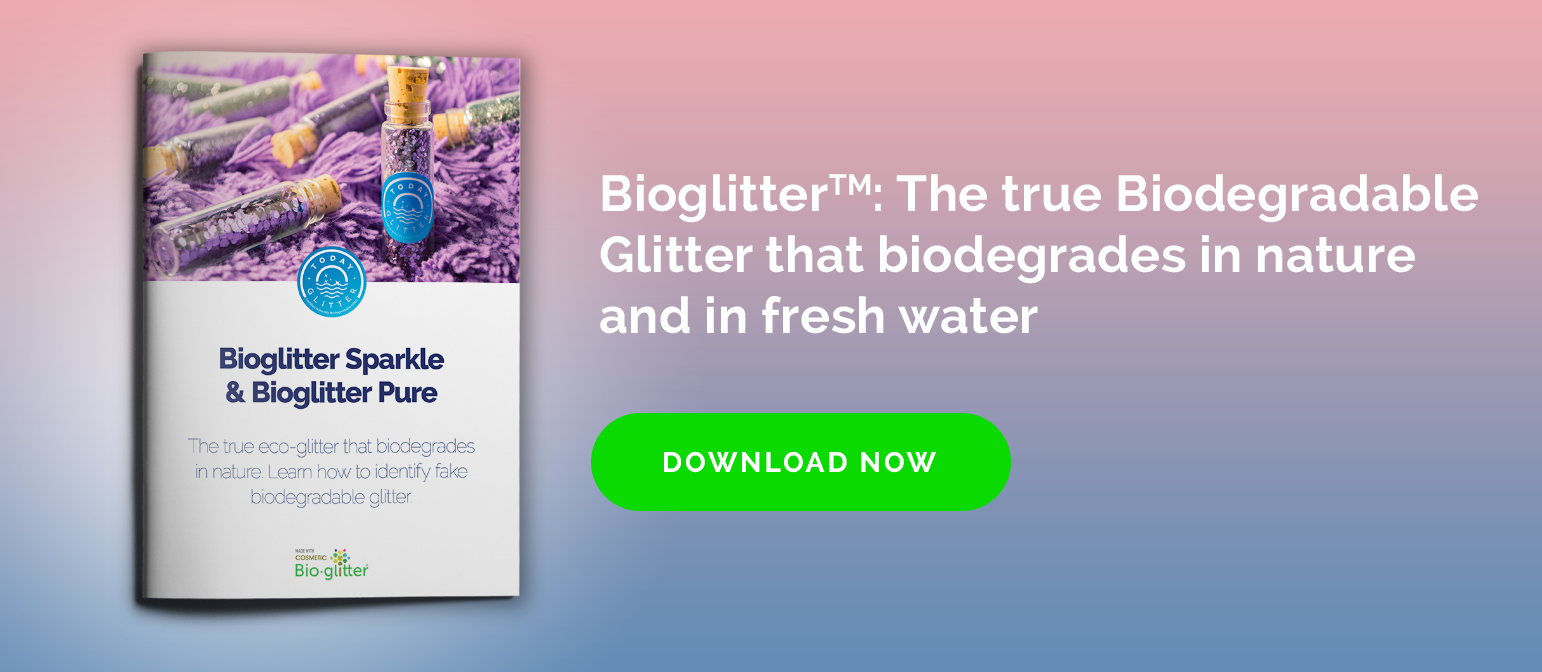How Is Polyester Glitter Made?
"What on earth is polyester glitter?" you might ask yourself. We bet that you didn't even know that there were different kinds of glitter. But sure enough, there are! The glitter you use for cardboards can't be the same as the one mixed with acrylic paints or nail polish.
Maybe you thought that glitter was just glitter, like Madonna! But to your surprise, there are different kinds of glitter for different purposes. To put it simply, there is polyester glitter and craft glitter; and you should also include a third new brother called ecoglitter, which, if you ask us, is the better one (Zero bias!). It is a non-toxic and environmentally friendly glitter with the same spark. So keep on reading to get to know every member of this big glitter family!
What Is Polyester Glitter?
Polyester glitter is made from poly-plastic or, more technically, polyethylene terephthalate (PET). This kind of glitter lasts longer and is very versatile. It can be used both indoors and outdoors because it can endure sun and water exposure.
Most polyester glitters are heath and solvent-resistant, which means that you can combine them with nail polish, acrylic paint, and so on. Although some colors may bleed a bit, so many companies advise testing. Another downside is that it is very expensive!
Polyester Glitter Vs. Craft Glitter
Yes, there are big differences! They are made from various types of film and with different coatings, which translates into different usage. Also, they can have many cuts and effects.
Craft glitter can be made from metal, glass, or are poly-coated dyes. They are usually cut in bigger sizes and with sharp angles, such as squares or hexagons. This chunky glitter presentation, though it is not expensive and gives a lot of sparks, has low coverage. For instance, one pound of craft glitter may cover 14 square feet, whereas one pound of poly-glitter covers 100 square feet.
Also, craft glitter doesn't perform well in high temperatures beyond 280F, and it isn't solvent safe. In addition, craft glitter is a big no-no for skin application! Cosmetic grade glitter is actually polyester glitter. It comes in ultrafine flake sizes and is stained with food-grade colorants in line with safety standards for use on skin.
It Doesn't Matter Which One You Choose Because Both Are PLASTIC!
Sorry to break the bubble, but neither is good for you or the planet! And there is nothing to be said to change this ugly truth. Regular glitter is gorgeous but also very dangerous. It is considered microplastic due to its size and is part of the pollution of oceans worldwide.
Raising awareness about microplastic pollution is very important because most people don't realize that glitter translates into millions of tiny bits of waste scattered through the oceans, impacting aquatic sea life. They can take more than two hundred years to degrade, are impossible to separate from the rest of the trash, and can't even be recycled.
However, we have excellent news for you. To be part of the solution and not the problem, you don't have to give up glitter or feel guilty when using it. You just have to use Bioglitter™ instead!
Invented and manufactured by Ronald Britton Ltd, a British company, our ecoglitter is a plant-derived material made of eucalyptus core rather than plastic. This cellulose comes from certified plantations that comply with PEFCTM standards to ensure sustainable forest management.
Also, Bioglitter™ is antimony-free, has a very low content of heavy metals, is sparkly, and practically indistinguishable from polyester glitter. It is suitable for vegans, is allergen-free, CMR and GMO-free.
Bioglitter™ Is Eco-Friendly, And We Have the Certifications to Prove It!
Bioglitter™ is an eco-friendly alternative to plastic-based glitter. It is specially designed to quickly biodegrade in natural freshwater environments, turning into harmless substances as proven through ISO14851 and ISO14852 freshwater testing specified by the ECHA (European Chemicals Agency). This is the highest level of third-party certification for freshwater biodegradability worldwide.
For some companies, it is pretty easy to make claims and say that they are "100% plastic-free" or "biodegradable." However, for their glitter to be considered biodegradable, they must:
-
Pass the freshwater test to determine whether or not their glitter is considered microplastic.
-
Show the results to back it up!
A true ecoglitter must be NATURALLY biodegradable, meaning it must degrade under natural conditions. In our case, Bioglitter™ degrades in around 30 days and only requires water, heat, oxygen, and microorganisms. Zero waste and no need for composting facilities!
With Bioglitter™ You Get the Best of Both Worlds!
We have a special line called Deco Bioglitter™, a technical grade solvent-safe ecoglitter with enhanced resistance properties for printing, decorative dip coating, or mixing pre-application with dry spray and clear top coats.
Besides being perfect for general decoration applications, our ecoglitter is also suitable for recreating make-up looks, body painting, and crafts in general. Bioglitter™ Pure is compatible with various solvents, showing high resistance for applications with gel, enamels, and other manicure products. Also, Bioglitter™ Sparkle is a cosmetic grade glitter 40% softer than regular polyester glitter, making it super silky and comfortable for skin application.
So, Bioglitter™ is eco-friendly and gives you versatility! On top of that, it won't break your bank account. You will get lots of glitter and sparkle for a fraction of the price you might expend buying regular polyester glitter.


